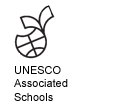History
In 1953, it was decided to set up a Scheme of co-ordinated Experimental Activities in Schools of Member States in order to “encourage the development of education in the aims and activities of the United Nations and the Specialized Agencies and in the principles of the Universal Declaration of Human Rights.”
The scheme started out at the grassroots level with 33 schools in fifteen countries. Driven over five decades, by a growing number of enthusiastic and creative teachers committed to reinforcing the humanistic, cultural and international dimensions of education in view of world developments, this modest initiative has now developed into one of the world’s largest and most unique networks of schools.
Related documents
UNESCO Associated School Project Network (ASPnet): historical review 1953-2003
Global Review Evaluation
In 2003, after fifty years of networking with a view to reinforcing the humanistic, ethical, cultural and international dimensions of education, ASPnet commissioned a Global Review evaluation to identify strengths and weaknesses of the network and recommend ways to enhance its effectiveness and chart its future course. The Global Review concluded “that ASPnet is in a unique position to effect improvement in educational quality as defined by the areas such as peace, democracy, rights, sustainable development and the quality of life.
Country Profiles 2003
As part of the Global Review conducted by the Centre for International Education and Research at the University of Birmingham in the UK to mark the 50 years of ASPnet, brief accounts of ASPnet national networks are given in the Country Profiles which are organised by region. In the overall sample of 575 schools and colleges from 89 countries, just under 79.7 per cent were state or government schools and 20.3 per cent were private schools. Within those categories, 58 per cent were secondary schools, 25.5 per cent were primary schools, 8.4 per cent were pre-primary schools, 5.3 per cent were vocational schools and 3 per cent were teacher training colleges. The sample was therefore generally in proportion to the types of school in ASPnet, so the country profiles may be read with the overall picture in mind.
School Profiles 2003
‘What an ASPnet school looks like…’: As part of the Global Review 2003, 25 countries were asked to provide in-depth profiles of two ASPnet schools to demonstrate the range of schools in the network and highlight activities of interest. The snapshots of schools are realistic and include challenges faces by some schools. While some are better funded than others none of the schools are ‘elite’. All have in common the four ASPnet themes and activities reflecting commitment to UNESCO ideals (international days, human rights, democracy, non-violence, intercultural learning and protection of the environment).



